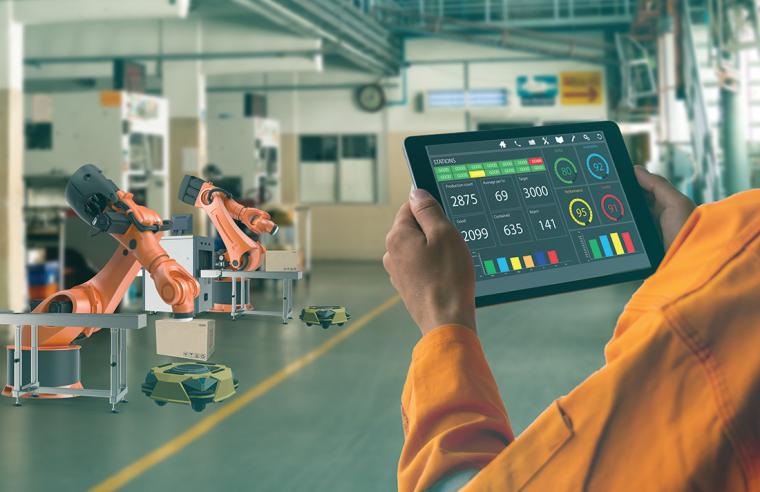
We stand at the brink of a new era of connectivity. The advent of 5G technology promises to revolutionize various industries, instigating a paradigm shift in how businesses operate. This next-generation network is not merely an upgrade; it signifies a radical leap toward an interconnected world, replete with faster data speeds, lower latency and unprecedented capacity for device connectivity.
However, to effectively realize the benefits of 5G, a robust underlying network infrastructure is of paramount importance. The deployment of advanced network solutions, including high-performance ethernet cables and professional Wi-Fi installations, forms the cornerstone of this infrastructure. These components act as the conduits for the high-speed, high-capacity data transfers that characterize 5G connectivity, laying the foundation for businesses to harness the power of this groundbreaking technology.
The Power of 5G: An Overview

5G, or Fifth Generation technology, is a transformative force that is set to redefine the landscape of wireless connectivity. This technology distinguishes itself from its predecessors through its superior features and capabilities.
The primary strength of 5G lies in its speed. Where 4G networks typically offer download speeds of around 20 Mbps, 5G networks can theoretically provide speeds up to 10 Gbps – that’s 500 times faster. Such high speeds can enable the seamless streaming of ultra-high-definition content, real-time gaming and instantaneous cloud access.
However, 5G is not just about speed. It also significantly reduces latency, the delay before a transfer of data begins following an instruction. While 4G networks have a typical latency of around 50 milliseconds, 5G can reduce this to as low as one millisecond. This is crucial for applications in which immediate response is critical, such as in autonomous vehicles, remote surgeries and real-time control of machinery in factories and other industrial applications.
Another hallmark of 5G is its capacity for massive device connectivity. It is engineered to connect a far greater number of devices than 4G, enabling the widespread adoption of the Internet of Things (IoT). From smart homes and cities to industrial IoT applications, the high device connectivity of 5G paves the way for extensive interconnectivity and data sharing.
In essence, 5G is much more than a step up from 4G; it is a quantum leap that brings us closer to the vision of a fully connected and interactive world. However, to truly harness its capabilities, businesses need to invest in a robust network infrastructure. Only then can they fully tap into the power of 5G and its potential to drive industrial development.
Economic Implications of 5G Deployment
The integration of 5G technology promises not only advanced connectivity but also significant economic shifts. For businesses, the initial costs of 5G infrastructure deployment can be substantial, encompassing expenses related to updating equipment, retraining personnel and ensuring compatibility with existing systems. However, the potential return on investment is equally compelling. Enhanced operational efficiencies, the capability to harness innovative applications and the potential for increased revenue from new service offerings can all drive profitability in the long run. From a broader perspective, regions or countries that prioritize 5G integration could position themselves as frontrunners in the global market. Early adoption can attract tech-centric businesses and stimulate job creation in sectors like telecommunication, software development and network maintenance. Additionally, such regions could see an upswing in foreign direct investments, as businesses worldwide recognize the advantages of operating in a 5G-enabled environment.
The Impact of 5G on Site Selection
As 5G networks begin to roll out across the globe, businesses must reassess their site selection strategies. The unparalleled connectivity, speed and capacity of 5G can revolutionize business operations, enabling new functionalities and opportunities that can significantly influence site selection.
One of the most significant impacts of 5G on site selection revolves around enhanced connectivity and the potential for seamless remote operations. With 5G, data can be transferred in real-time with minimal latency, making it possible to manage and control operations remotely. This opens up the possibility of locating facilities in regions that offer other advantages, such as tax incentives or access to specific markets, without being restricted by the need for on-site management.
The roll-out of 5G also underscores the need for robust digital infrastructure. As site selectors evaluate potential locations, the availability of a reliable 5G-ready infrastructure, including advanced network infrastructure like ethernet cables and WiFi installations, will become a critical factor. Sites lacking such infrastructure may be deemed less favorable due to the potential cost and time required for upgrades.
Finally, the impact of 5G on various sectors further influences site selection. For instance, in manufacturing, 5G can enable real-time control of machinery and advanced automation. As a result, manufacturers may favor sites with access to 5G technology to leverage these benefits. Similarly, in the logistics and healthcare sectors, 5G can enable enhanced tracking and remote diagnostics, respectively, influencing site selection toward 5G-ready locations.
Stakeholders’ Perspective on 5G
The roll-out of 5G technology evokes varied reactions from different stakeholders within the construction and industrial sectors. Developers, for instance, foresee immense opportunities with 5G, envisioning construction sites where real-time data from across the globe can be accessed in milliseconds, facilitating quicker and more informed decision-making. Local governments, on the other hand, might grapple with the challenges of drafting regulations and standards for this new technology while balancing the potential economic growth it promises. Workers, particularly those in manual or low-skilled jobs, could harbor concerns about automation and the role of artificial intelligence (AI), both of which 5G could expedite. Meanwhile, residents in areas poised for new developments might be swayed by both the allure of state-of-the-art connectivity and potential concerns about health or environmental impacts. In essence, while 5G’s potential is universally recognized, its reception varies, influenced by the unique priorities and concerns of each stakeholder group.
Infrastructure Needs for 5G: Ethernet Cables and WiFi Installations

The successful deployment of 5G technology hinges on robust network infrastructure. Ethernet cables and Wi-Fi installations are critical components of this infrastructure, playing a crucial role in supporting 5G connectivity.
Ethernet cables provide the high-speed, reliable wired connections needed to support the bandwidth demands of 5G. They ensure that data can be transported swiftly and efficiently across networks, minimizing latency and maximizing network performance. Moreover, advanced ethernet cables designed to support higher frequencies can further boost data transfer rates, thus accommodating the speed demands of 5G.
On the other hand, Wi-Fi installations facilitate wireless connections in localized areas, such as within a building or across a campus. While 5G promises superior wireless connectivity, Wi-Fi continues to be critical for delivering high-speed internet in enclosed environments. Professional Wi-Fi installations ensure optimal signal coverage and quality, allowing devices to seamlessly tap into the 5G network.
However, merely having these components is not enough. The installation, configuration and maintenance of ethernet cables and Wi-Fi installations must be handled by experienced professionals to ensure optimal performance. An inadequate or improperly set up network can hamper the performance of 5G, negating its benefits. As such, businesses should prioritize professional network setup when preparing their sites for 5G technology, ensuring they can fully harness the power of this next-generation network.
Looking Forward
As we have explored, the advent of 5G technology holds transformative potential for various industries, playing an increasingly critical role in site selection. The advanced connectivity, speed and capacity offered by 5G enable novel operational efficiencies and functionalities, expanding the horizons of business locations. Additionally, the importance of robust digital infrastructure, including Ethernet cables and Wi-Fi installations, cannot be overstated in this new era, as they form the backbone that supports 5G technology.
Looking ahead, we can expect the influence of 5G on industrial development and site selection to grow further. As 5G technology continues to evolve and mature, it will unlock new capabilities and applications that we may not even envision today. These advancements will continue to reshape the landscape of industrial development, presenting both opportunities and challenges. Hence, staying ahead of the curve will require businesses to keep abreast of these technological developments, adapting their site selection strategies to leverage the full benefits of the 5G revolution. T&ID
